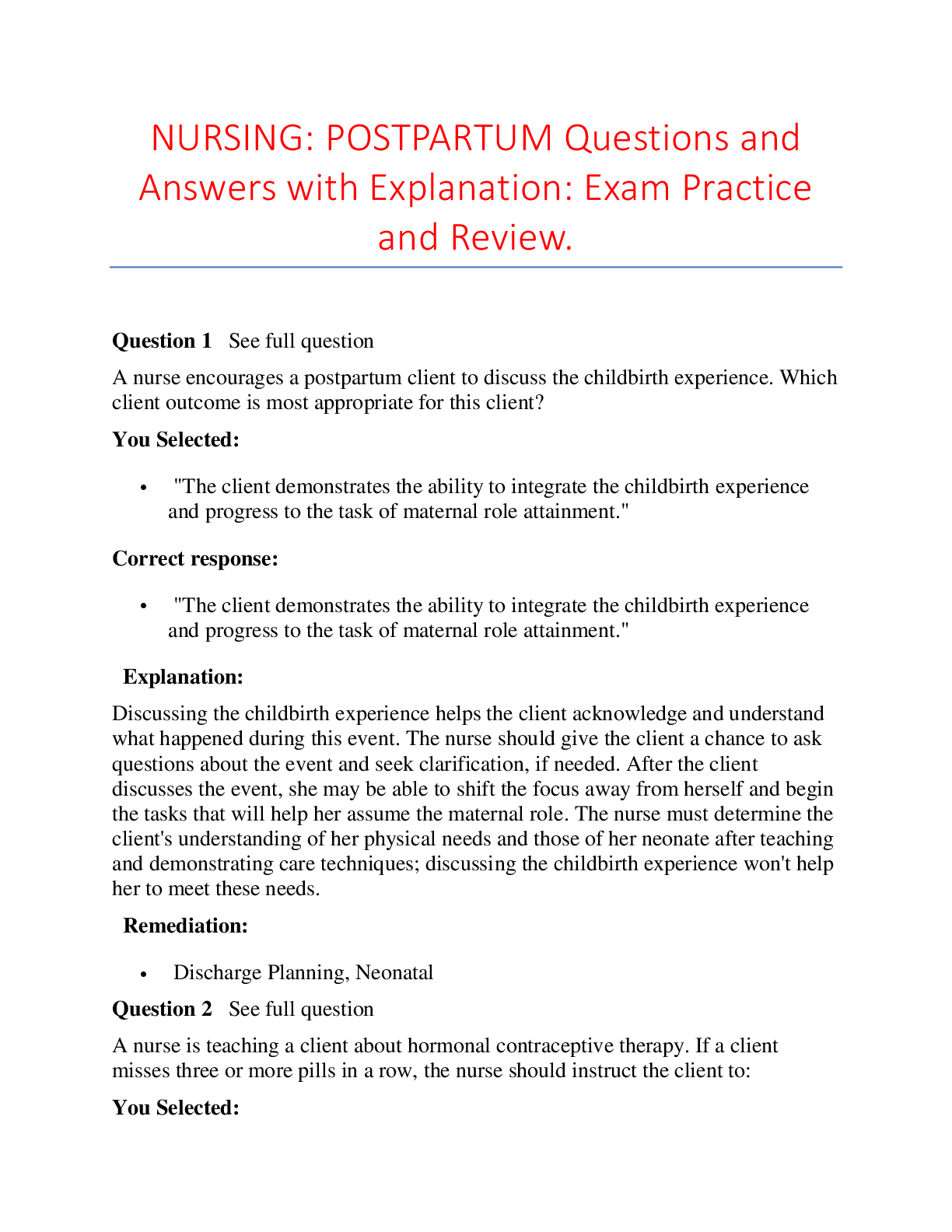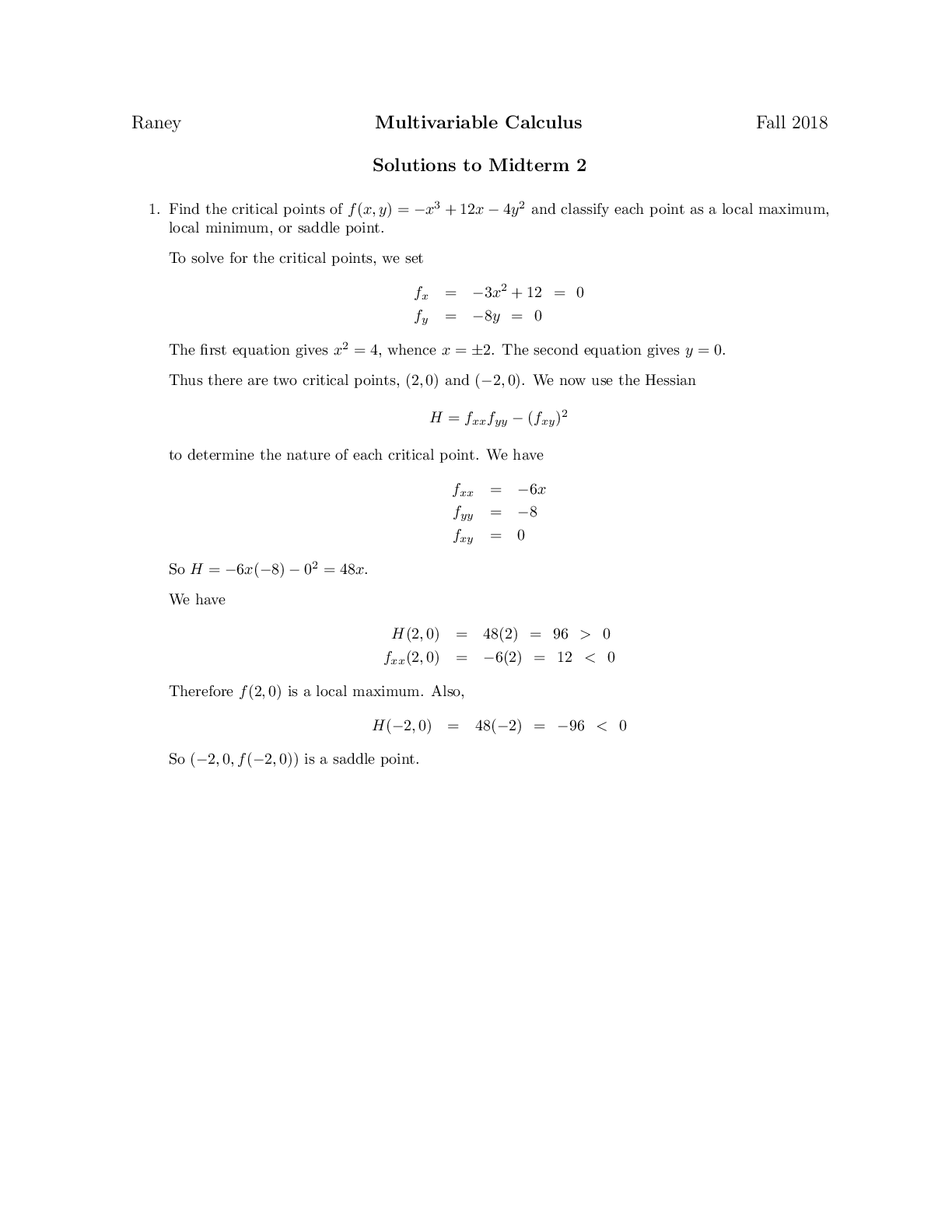Chemistry > QUESTIONS & ANSWERS > Empire State College, SUNY - CHEMISTRY 271044 Galvanic Cell. Electrochemical Cells and Cell Potenti (All)
Empire State College, SUNY - CHEMISTRY 271044 Galvanic Cell. Electrochemical Cells and Cell Potentials.
Document Content and Description Below
Electrochemical Cells and Cell Potentials ABSTRACT Purpose: The purpose of this lab was to be able to define a redox reaction and be able to write and define oxidation and reduction half reaction... s. Another purpose of this lab was to see a galvanic cell and describe the flow of electrons in a galvanic cell. Going along with that, I needed to be able to assemble a galvanic cell and use a multimeter to collect data based off that assembly and ultimately make conclusions about the cell potential of the redox reaction and what item is the cathode and what is the anode. EXPERIMENTAL: Procedure: The first thing I did was gather all my supplies I needed for the experiment. Next, I took the filter paper I had and cut off a 1.5 inch in width piece of the filter paper and then folded it in half so it was long and skinny. Afterwards, I used a plastic cup and placed the filter paper in the bottom of the cup and added potassium chloride until the filter paper was covered. I then let it soak until I was done setting up the rest of the experiment. Next, I took the two glass beakers, filling one with 45 mL of zinc sulfate and the other with 45 mL of copper sulfate. I then took a piece of zinc and put one end in the copper sulfate and then placed a strip of copper into the zinc sulfate and removed them and recorded the color changes. Once that was done I set up my voltmeter by making sure it was off, turning it to 20 DCV and placing the probes in the correct holes and putting jumper cables on the end of each. Next, I set up my salt bridge between the two beakers and then took a fresh piece of zinc and attached a jumper cable to it and did the same with a piece of fresh copper. I placed the zinc in the zinc sulfate solution and the copper into the copper sulfate solution and turned the voltmeter on and checked to see if it was negative. Since it was I switched the cables so they were holding the opposite metal than what they just had and turned the voltmeter on again. I waited about 5 minutes so the reading stabilized and then recorded the reading. I checked back every 15 minutes for 2.5 hours and recorded each reading. Questions: A. What were the concentrations of the solutions (zinc solution, copper solution, and salt bridge)? Were the concentrations consistent with those of standard state conditions? Explain your answer Was the amount of electric energy produced in your galvanic cell consistent with the standard cell potential of the reaction (as calculated in Data Table 3)? Hypothesize why it was or was not consistent Was there evidence of electron transfer from the anode to the cathode? Use your data in Data Table 2 to explain your answer For the following redox reaction in a galvanic cell, write the oxidation half-reaction and the reduction-half reaction, and calculate the standard cell potential of the reaction. Use Table 1 in the Background as needed. Explain how you identified which half-reaction is the oxidizer and which is the reducer. Show all of your work Observations/Conclusions: In the experiment the main goal was to set up a galvanic cell, observe the changes, and use various equations to perform calculations and answer questions based upon the results. The galvanic cell was set up by putting a copper electrode in copper solution and a zinc electrode in a zinc solution, and then a salt bridge is created to connect the two half cells. The salt bridge contains an inert electrolyte solution, so that it does not react with the ions of the electrodes or solutions. Through the experiment the metals determined to be either an anode or a cathode. An anode is the electrode at which oxidation occurs and a cathode is the electrode at which reduction occurs. Using this information, I calculated the standard cell potential if it is under standard state to be 1.10 Volts. When calculating the standard cell potential, I used the standard cell potential for the cathode and subtracted the standard cell potential of the anode. In this case, the cathode was copper and the anode was zinc. This study source was downloaded by 100000810822090 from Cours [Show More]
Last updated: 2 years ago
Preview 1 out of 5 pages
.png)
Buy this document to get the full access instantly
Instant Download Access after purchase
Buy NowInstant download
We Accept:

Reviews( 0 )
$14.00
Can't find what you want? Try our AI powered Search
Document information
Connected school, study & course
About the document
Uploaded On
Apr 20, 2021
Number of pages
5
Written in
Additional information
This document has been written for:
Uploaded
Apr 20, 2021
Downloads
0
Views
115















